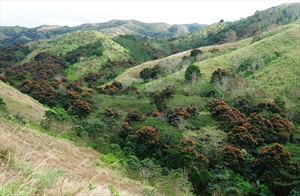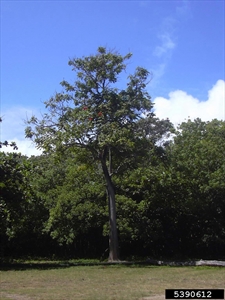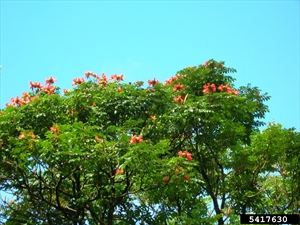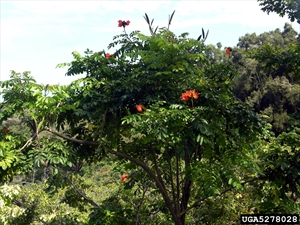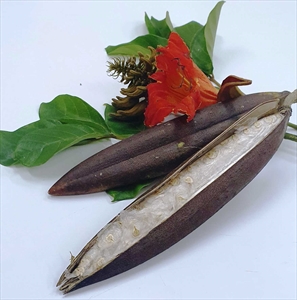- Worldwide distribution. In Australia and many Pacific island countries.
- An invasive tree especially in high rainfall disturbed areas along roads, waterways, and at forest margins where it competes with native vegetation. It also competes with crop production. Alternative view is that it revegetates disturbed areas, providing habitat for native birds and animals.
- Grows up to 35 m with spreading crown, slightly buttressed trunk, compound leaves with 11-15 leaflets, each up to 15 cm long, in opposite pairs. Flowers in large dense clusters at tips of branches, individually enclosed in boat-shaped, leaf-like structures (sepals). Petals reddish-orange, fused together, somewhat tulip-like. Seedpods flattened, brown, erect, releasing up to 500 light, winged seeds.
- Spread: masses of wind-dispersed seed and by suckering.
- Biosecurity: regulate entry of trees and their distribution locally.
- Natural enemies: non-specific caterpillars, and the fungus Ceratocystis are reported.
- Cultural control: pull or dig out seedlings, but only when young, otherwise suckers grow from the roots.
- Chemical control: in Australia: triclopyr + picloram; triclopyr + picloram + aminopyralid; glyphosate (and Fiji).

